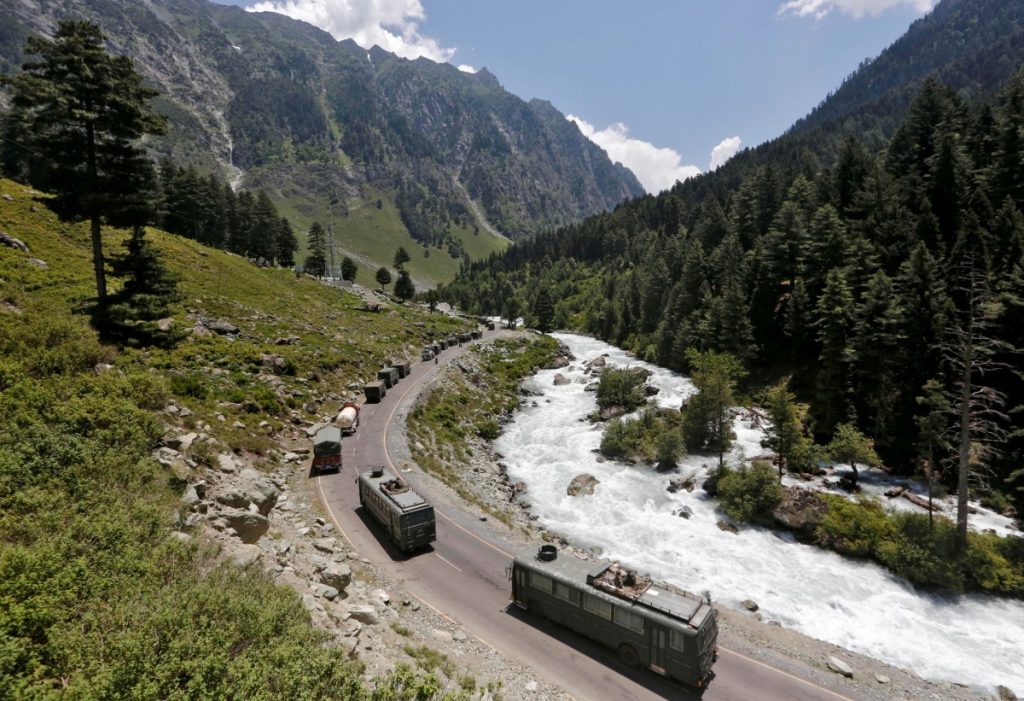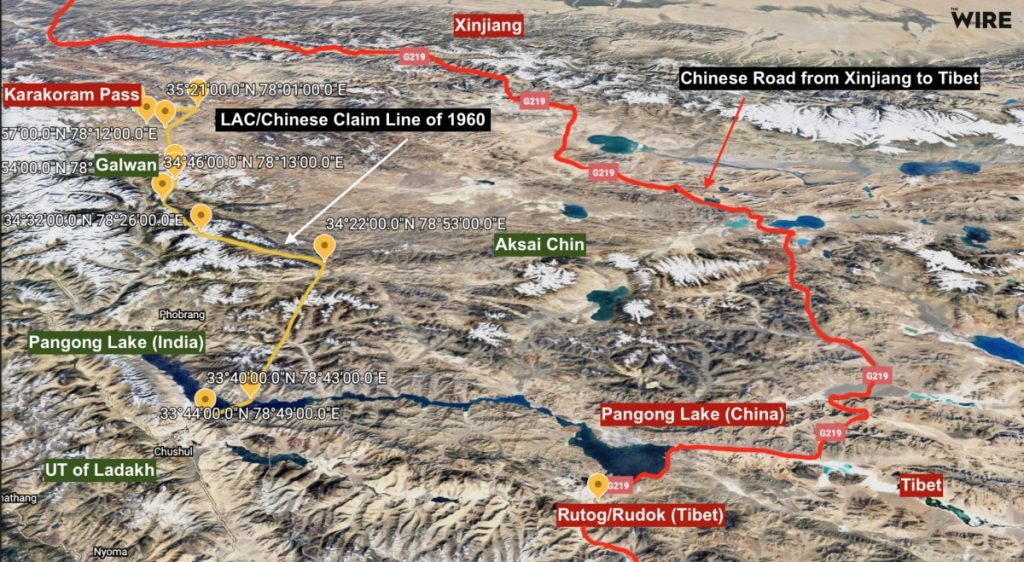Since the Clash in Galwan Valley, Ladakhis Feel Insecure, Fearful and Betrayed
New Delhi: Over the past few weeks, the country has been assured and reassured periodically by the Ministry of External Affairs that there is no longer anything to worry about in Ladakh’s Galwan Valley, the place on the Line of Actual Control (LAC) between India and China where, on June 15, 20 Indian soldiers including their commanding officer, were killed in a face-off with China’s People's Liberation Army (PLA).
But the people of Ladakh, who are right on the frontlines, continue to worry.
Dubious of heightened Chinese activity in the Demchok area, Urgain Chodon, chairperson of the Nyoma Block Development Council, said on Facebook, “Whatever has happened in Galwan is not new, it has been happening since many years. People are in a state of panic, people are not afraid of coronavirus anymore, they’re afraid of the Chinese intrusion and the war-like situation here. Everyone here is frightened since the border inhabitants have to face the consequences first.”
Since the Chinese intrusion, Chodon added, the people of Galwan Valley have lost land where their cattle could graze, which means their livelihoods are threatened. Border patrolling, however, she said, appears to be limited.

Pangong Tso Lake on the India-China border region in Ladakh. Photo: Koshy Koshy/Flickr (CC BY 2.0)
‘We can see them usurp our land’
“Intrusion is not new to Ladakhis, the only concern is that the Chinese have not withdrawn completely,” said Rigzin Spalbar, former chairman and chief executive councillor of the Ladakh Autonomous Hill Development Council. “But this time, the Chinese have occupied a very vulnerable and crucial point and the pronouncement by the Central government that there is no cause to worry makes us worry even more, because we can see the Chinese usurping our lands.”
By denying the presence of the Chinese on Indian territory, Spalbar said, India gives the impression that it is scared.
Ladakhis are certainly scared, says Drass-based Ghulam Rasool Nagvi, the chief spokesperson for the National Conference (Ladakh). He told The Wire, “People are fearful; people are in pain because of the inaction of the Central government on this land grabbing by China.” Over the years, China has "inched further" into Ladakh, he said and that Ladakhis have been losing "hard earned" land to them. "We don’t even have the space to protest because we know how this government functions. Today I protest and tomorrow I will be jailed,” Nagvi said.
Also Read: How Rajnath Singh Spilled the Beans on the PLA in Ladakh After Sustained Misinformation
The Galwan crisis has cracked open a set of developmental insecurities that need to be tackled as soon as poosible, observed retired Colonel Sonam Wangchuk, who received the Maha Vir Chakra for his service in Kargil.
“Perpetual land slicing, herders losing their grazing lands and concentrated commercialisation in and around Leh is posing obstacles for nomads and remote village folk,” Wangchuk told The Wire. “This crisis shows the lack of good infrastructure at the borders. If the army must be mobilised in any eventuality, it is going to be very difficult.”
Having served at Pangong Tso himself, Wangchuk spoke with good authority on the neglect faced by those who live on the borders. “If the Chinese apply the stick and carrot approach and try to appease the border folk, reshaping their minds to facilitate further encroachment upon Indian territory, it could pose major problems,” he said. “Any sort of laxity from our side in patrolling can aid the PLA and it is important to relay information to prevent such incidents in future.”

An Indian Army convoy moves along a highway leading to Ladakh, at Gagangeer in Kashmir's Ganderbal district June 18, 2020. Photo: Reuters/Danish Ismail/Files
The irony of appropriation
For many Ladakhis, India’s low-key response to the Chinese aggression speaks not only of fear but also of the failure of policy. “During the Kargil War, India gave a bold, befitting response to the aggressors,” pointed out Sajjad Kargili, a social activist from Kargil. “But in this episode of military intrusion in Galwan, 21 years after Kargil, we see a clear failure of India’s foreign policy as well as domestic policy.”
Kargili pointed out the irony of the Central government’s sense of triumph over the reading down of Article 370 on August 5, 2019, and its plans to regain Aksai Chin, when in actuality, it is China that is getting closer to Ladakh with every move. “Regional insecurity had increased since August 5 last year, but now the people feel a deeper insecurity because of the clash at the international border as well,” he said.
Also Read: Intelligence Failure on PLA Intrusions in Ladakh Brings Back Memories of Kargil
“Apprehension has become part of our life as Ladakhis,” said Deldan Namgyala, former MLA from the Nubra valley. “While many government officials and media channels have said that the situation is de-escalating, I can tell you that there is still a PLA presence in the Finger Four area near Pangong Tso, though it has decreased somewhat. The people of Chushul village still haven’t been allowed to return and even the BSNL network has been snapped,” he told The Wire.
The behaviour of the media has not helped calm Ladakhis at all, Namgyal added. “Reporters from channels like India Today and Zee News have been pointing to other peaks and calling them Galwan Valley, claiming that the PLA has moved out. But Galwan has a river which swells at this time of the year. Armies often move away for this reason,” he explained. “Claims that the PLA structures have been removed cannot also be completely believed because satellite imaging is not 100% accurate in mountainous valleys.”

Satellite image of Ladakh, with the Chinese claim line marked in yellow and the Chinese road from Yecheng in Xinjiang to Tibet in red passing through Aksai Chin in eastern Ladakh. Image: The Wire/Google Earth
Both the Indian Army and the PLA patrol the area to the point of Finger Eight (a western post near the LAC). But the PLA got to Finger 4 and then retreated back to 5, which puts Fingers 5-8 in their control, said Namgyal. “The increased movement of helicopters and fighter jets in this region has heightened anxieties among the locals. Many are already losing their livelihoods because of the capture of their grazing lands by the PLA,” he said.
The locals are uncertain, anxious and confused about what will happen to their homes. “The government has forgotten Ladakh after carving it into a Union Territory,” said Rigzin Dorjey, a student activist from Sakti village. “Ladakhis are able to sleep soundly only because of the Indian Army, but the Central government is apathetic to the Army as well. This silence and inaction on the part of the government insult the Army too,” added Dorjey.
This article went live on July twenty-ninth, two thousand twenty, at zero minutes past seven in the evening.The Wire is now on WhatsApp. Follow our channel for sharp analysis and opinions on the latest developments.




